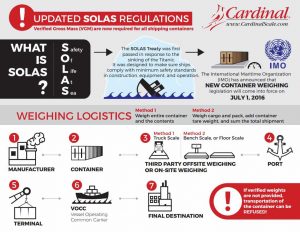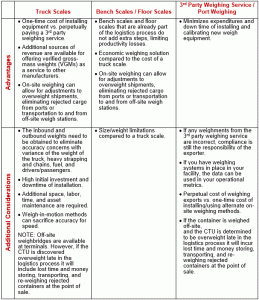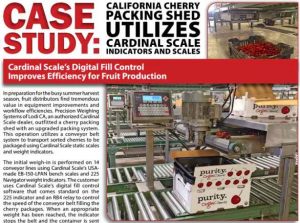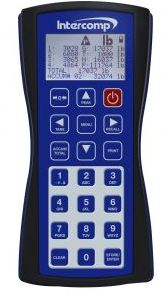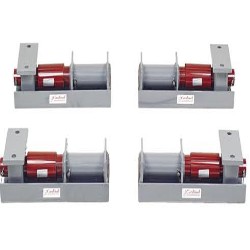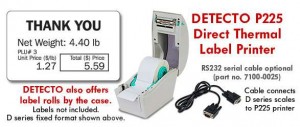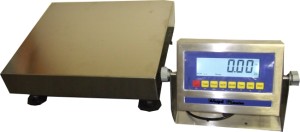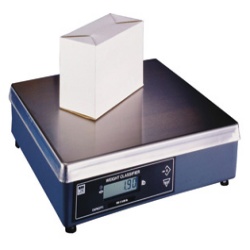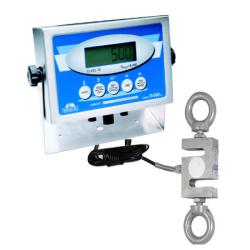We’ve mentioned SOLAS before but here is just a friendly reminder. Beginning July 1, 2016 changes to the Safety of Life at Sea (SOLAS) treaty will require verified weight certificates for all containers before they are loaded onto a ship. If the certificate is not submitted in a timely matter (12-24 hours prior to stowing cargo), the cargo runs the risk of being refused passage. This new regulation will have a significant impact on several groups, including scale dealers located near ports or working in the overseas logistics industry.
What is SOLAS?
The SOLAS treaty was first passed in 1914 in response to the sinking of the RMS Titanic to improve safety procedures at sea. The International Convention for the Safety of Life at Sea (SOLAS) is part of the International Maritime Organization (IMO), the maritime arm of the United Nations.
Aren’t weights currently pre-determined and declared for shipping containers?
Pursuant to previous regulations, shippers have already been required to declare container weights on their supplied bill of lading/paperwork. Verification of shipping weights by approved methods of weighing will now be mandatory due to several maritime disasters. These incidents range from falling containers at port or overboard from ships, forklift accidents, on-deck stack collapses (often due to heavier loads stacked on top of lighter loads), and even shipwrecks due to declared weights being as much as 6.7 times the declared weight. The MSC Napoli met it’s end in January of 2007 when 20% of the loaded containers exceeded their declared weight by 3 tonnes; the largest difference being 20 tonnes and the total weight of the 137 containers was 312 tonnes heavier than the cargo manifest.
Who will be affected by this new law?
The SOLAS treaty affects 99% of the merchant ships around the world in terms of gross tonnage. These revisions will affect shippers, freight forwarders, and vessel and terminal operators. All of these businesses will need to establish policies and procedures to ensure the implementation of these new regulations.
Who enforces the new guidelines?
The maritime organization of each country will be generally responsible for enforcement, beginning July 1, 2016. Implementation of the new regulations should begin prior to July 1st to avoid disruptions and fines, as trans-shipments may depart after the deadline. If weight discrepancies are found between the lading paperwork and the actual weight, non-compliant cargo will not be loaded on vessels, subject to the new regulations.
Who is responsible for weight verification?
The bill of lading paperwork will list the shipper. This entity will ultimately be legally responsible for providing the verified gross mass (VGM). If the exporter uses a third-party agent to pack and weigh the goods to be forwarded to the terminal, the forwarder is acting purely on the instructions of the shipper. Therefore, the exporter remains the legal party responsible for verifying the gross mass prior to stowing cargo.
Container weight verification options:
SOLAS guidelines, legally binding on July 1, 2016, for verified gross mass (VGM) reporting specify only two acceptable methods for weighing a cargo transport unit (CTU):
Method 1: Weigh (or have a third party weigh) the packed CTU.
Method 2: Weigh all cargo items and packing and securing materials, and add this to the CTU’s tare weight.
All methods of weighing must pass standards of accuracy, and should be calibrated according to the appropriate state’s standards. The shipping documents specifying the gross mass must be not only declared, but verified through approved methods. A shipping document ensuring the VGM must be signed by a person authorized by the shipper and submitted to the master/representative and the terminal representative sufficiently in advance, between 12-24 hours prior to stowage, to be used in the ship’s stowage plan.
If the shipping document is not provided for the container with a verified gross mass and/or the master or his representative and the terminal representative have not obtained the verified gross mass of the container, it shall not be loaded on the ship.
What considerations are there when determining the best weight verification methodology?
When considering the best answer to shipping according to SOLAS weight verification guidelines and the new CTU Code of Practice, consider the best method that will:
Allow the highest possible level of accuracy
Work within your logistics processes
Not pose risks to workers or civilians within the containers vicinity
Minimize loss of time and productivity
Minimize costs of maintenance and calibration of the systems/equipment
Provide accurate weighments for timely submittal to shipmasters (no less than 12-24 hours prior to stowage)
So, what choices do you have when it comes to obtaining digital weight scales?

